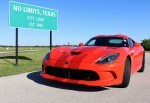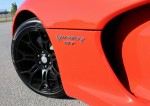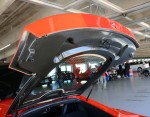2016 Dodge Viper GTC: A Foreign Supercar That’s Made in America

The Viper. Back in 1991, a first-generation model of it was driven as a pace car at the Indianapolis 500 by Carroll Shelby. It’s made by Dodge in its Conner Avenue Assembly Plant in Detroit, Michigan. It is, as the manufacturer says, an “American supercar,” right?
For those reasons, yes. However, after driving a Dodge Viper for the first time – a 2016 GTC – I came away feeling that it was very foreign in the following ways:
The Sidepipe Sound
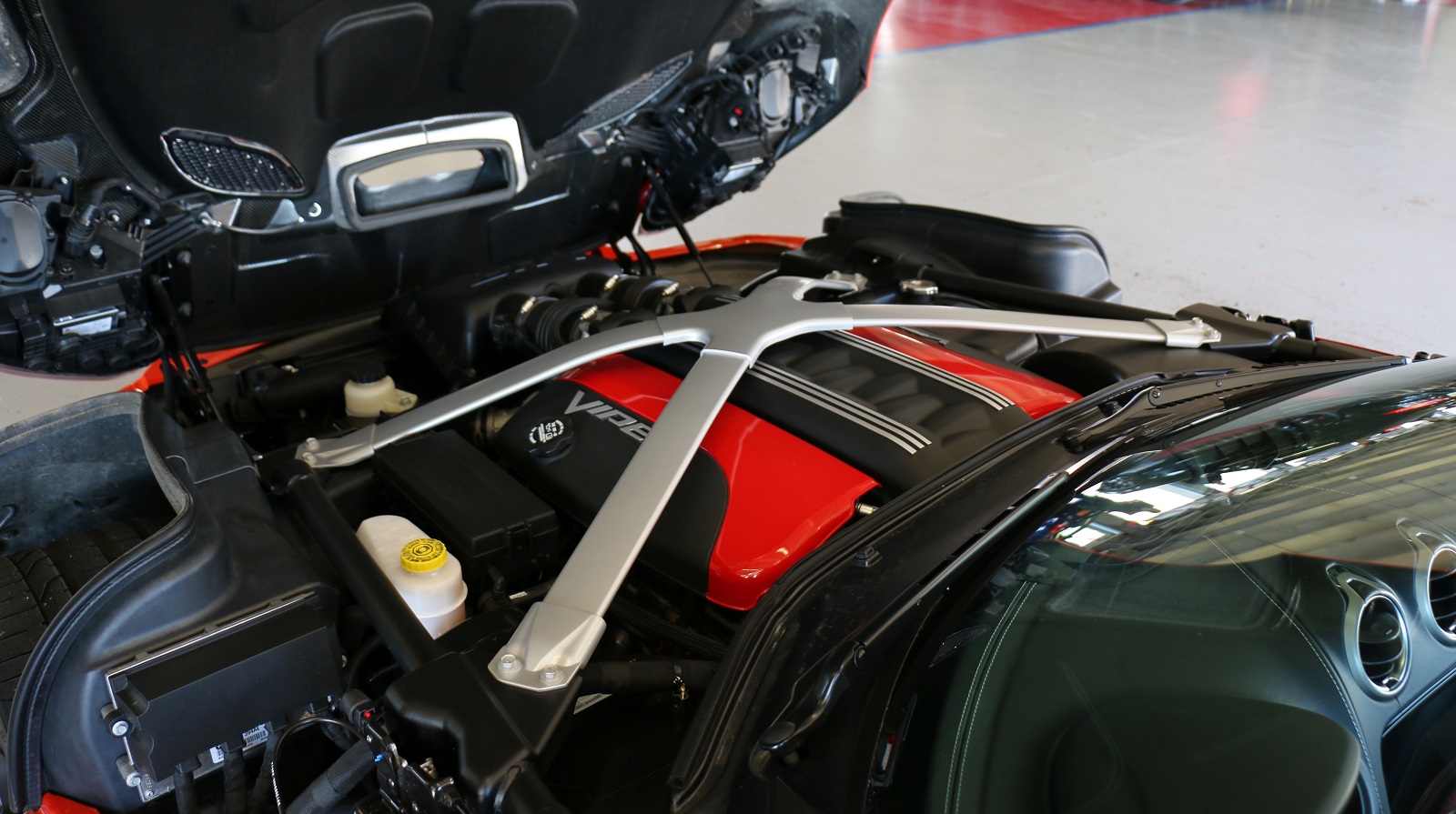
Dodge recently brought the “1 of 1” Viper down to the Texas Motor Speedway in Fort Worth for the Texas Auto Writers Association’s 2016 Auto Roundup in hopes of winning the title of “Supercar of Texas.” In a field of more than 50 cars, it didn’t have trouble doing that. With its two seats, obscene curves, and carbon fiber components, the Viper certainly looked the part. (It was also the only vehicle entered in its category.)
I fired it up in the garage, thinking the colossal 8.4-liter V10 would assault the ears of my fellow journalists with an explosion of American thunder like the Challenger and Charger Hellcat twins did.
It didn’t.
What I heard from the Viper’s side exhausts brought to mind an odd, slumbering beast with a breathing problem, an asthmatic bear with the wings of a dragon. I could hear the engine’s power in my ears, but it didn’t make for a pleasing sound.
Play Ball
After tilting my head to the left to fit it under the Viper’s low roofline, I poured myself into what I was told was the driver’s seat. It was so body-hugging that it felt as if I were sitting inside a catcher’s mitt. Along the same lines, the shift knob for the six-speed manual seemed as large as a softball. The steering wheel was as thick as the grip of a comically oversized bat. As large as everything was, the cabin itself felt rather small and shrink-wrapped around me. That contrast gave me the sensation of being in a cramped locker room on a different planet whose favorite pastime is, strangely enough, similar to baseball.
Through the Windshield
What I saw when I looked out in front of me was an alien landscape of carbon fiber curves, an orange wave of a horizon that made the view out of the front glass of a C7 Corvette Stingray seem commonplace and mundane.
Not “a Viper” at All
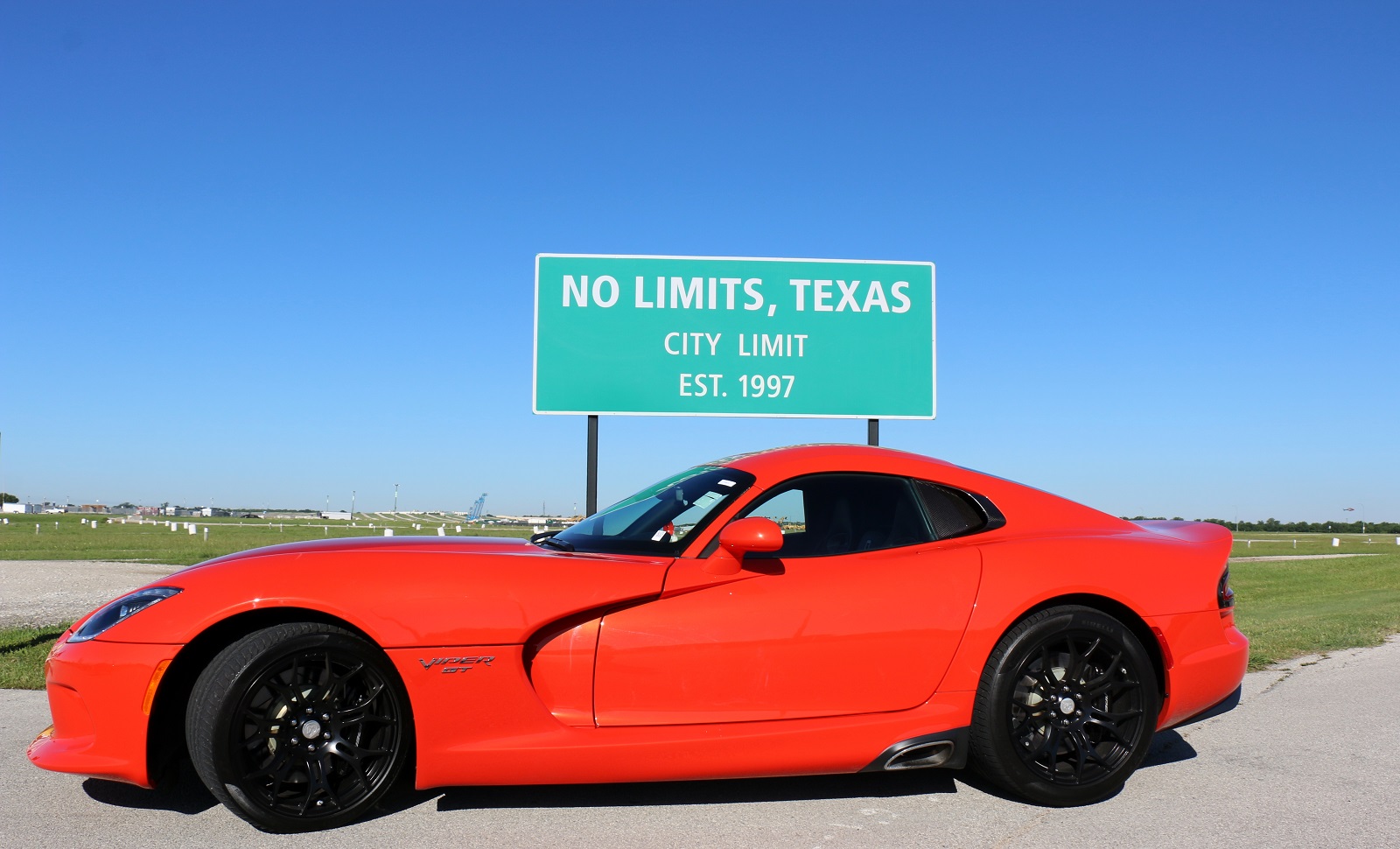
The current Viper has 645 horsepower and generations worth of a reputation for being a big, burly beast of a car that can bite you in the face if you don’t watch yourself. More than one writer at the event mentioned feeling intimidated by it. I expected it to be a brute that I would have to fight in every way.
Just driving the Viper at low speeds to get onto the infield course of the TMS made my testosterone level go up. Surprisingly, I didn’t need that boost to depress the clutch pedal. Getting access to the snake’s power didn’t take a lot of it from my left leg. Although the full travel of the clutch pedal was significant, I only needed about a quarter of it to change gears. For a car known for being difficult to handle, the Viper was shockingly easy to work with.
With a man named Moses, a professional driving instructor with years of experience racing Vipers, sitting next to me, I drove a warm-up lap around the track. As I did, he pointed out the best braking and acceleration points. Those came in handy on my second pass, a hot lap. Instead of wrestling the car in corners, I found myself pleasantly surprised by how…cooperative…it was. The back end stayed planted when I leaned on the gas after an apex and I felt comfortable with the push and the direction of it I felt behind me.

Granted, I’m no race car driver and I only had a few minutes of track time in the Viper, but I came away with a different outlook on the car. I’m now convinced that I’ve misunderstood it all these years. Perhaps more time in one would make me feel otherwise.
One area in which I was 100 percent right about it was not how it would behave while going forward, but while coming to a stop. On my fourth and final lap around the TMS, Moses instructed me to blast down the first straightaway, then slam on the brakes at the beginning of a line of cones before a right turn.
The Viper didn’t bite my face off, but it almost ripped it away from my skull – backwards. The calipers clamped down on the 14-inch discs, pushing my eyebrows back to my ears. When I took off my helmet, there was a huge smile on my face – and fewer wrinkles. I probably looked as unfamiliar to my colleagues as the 2016 Dodge Viper GTC felt to me.
Chime in with your thoughts on the forum. >>
via [HowStuffWorks], [FCA], and [Texas Auto Writers Association]

